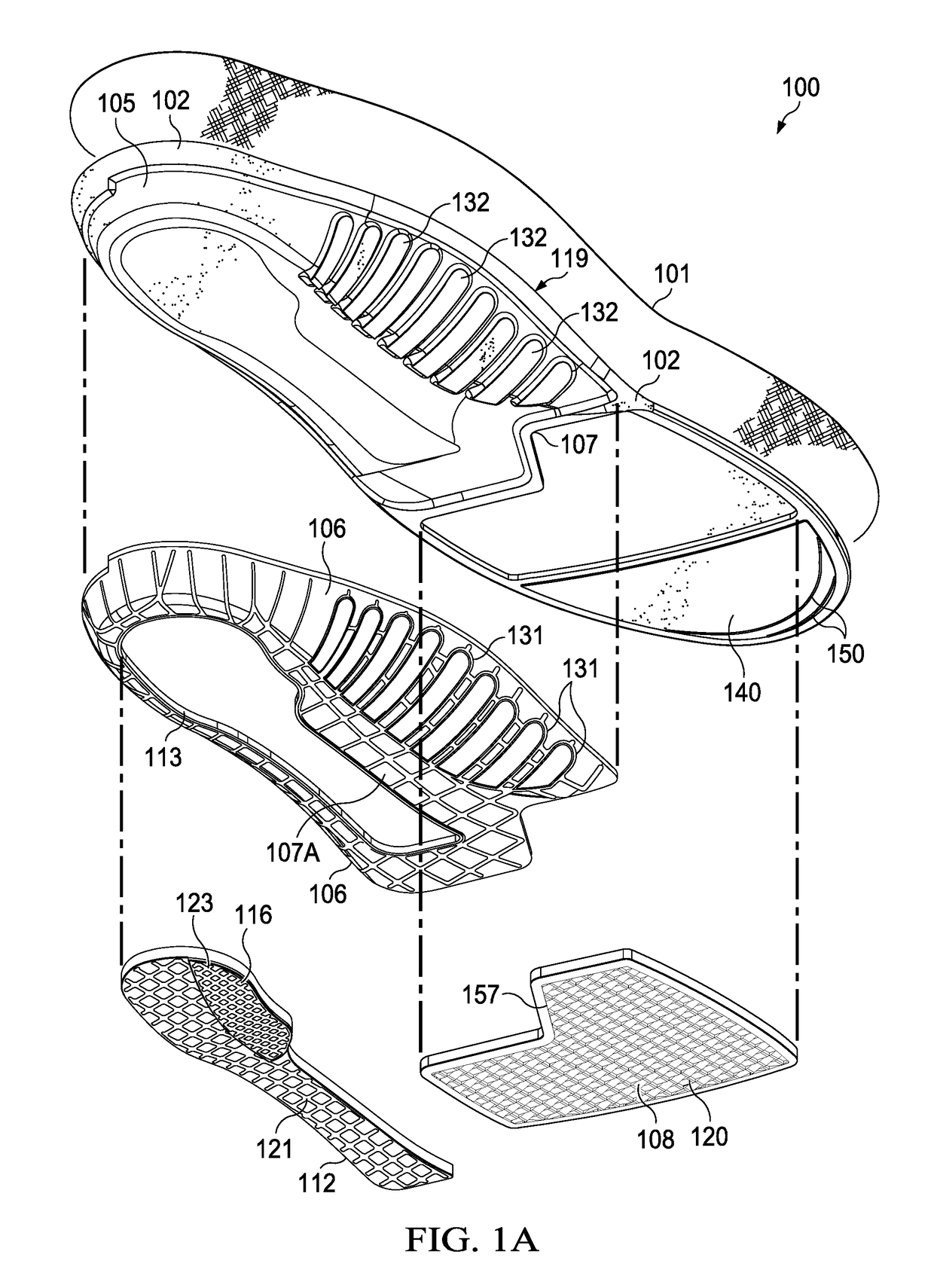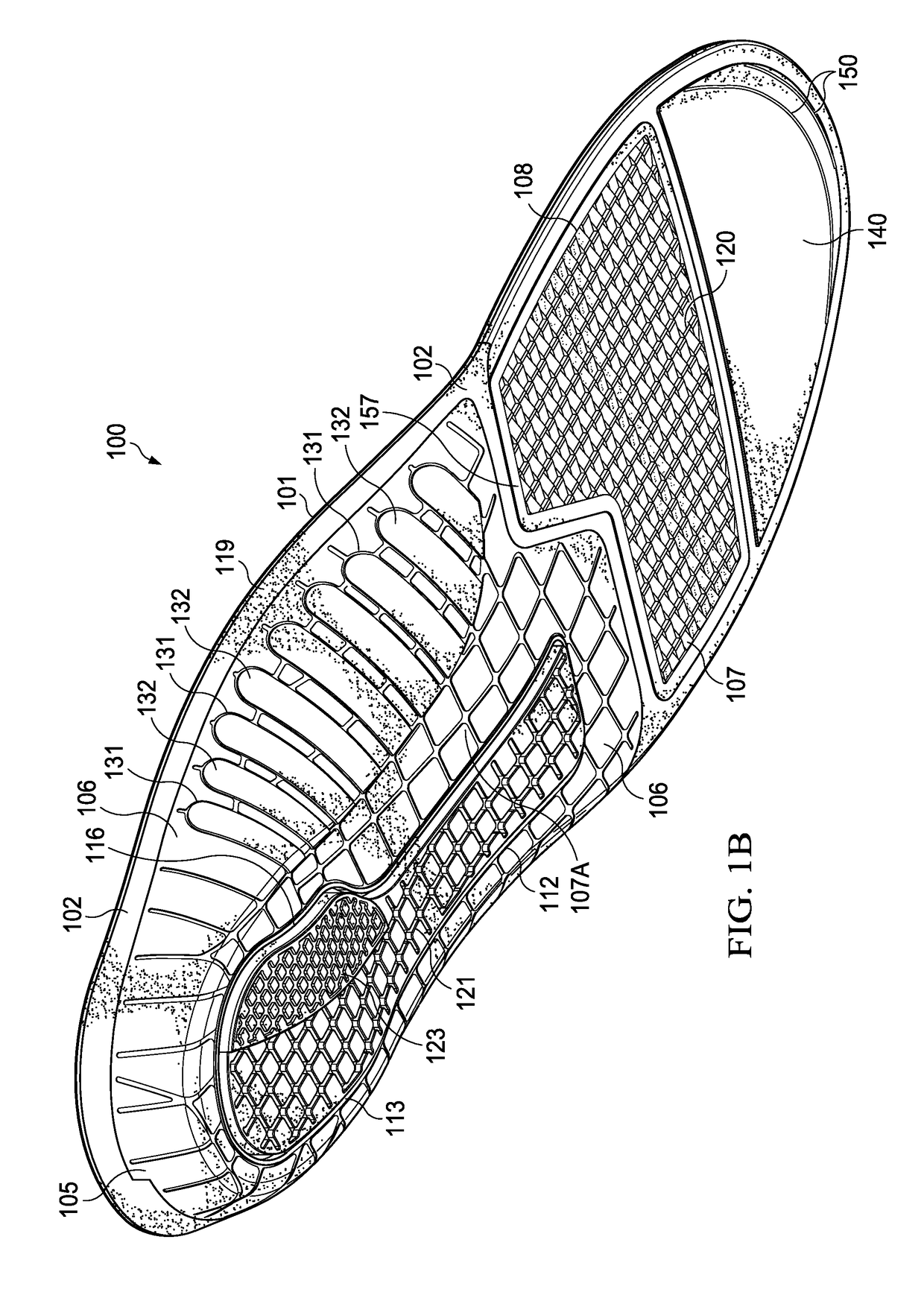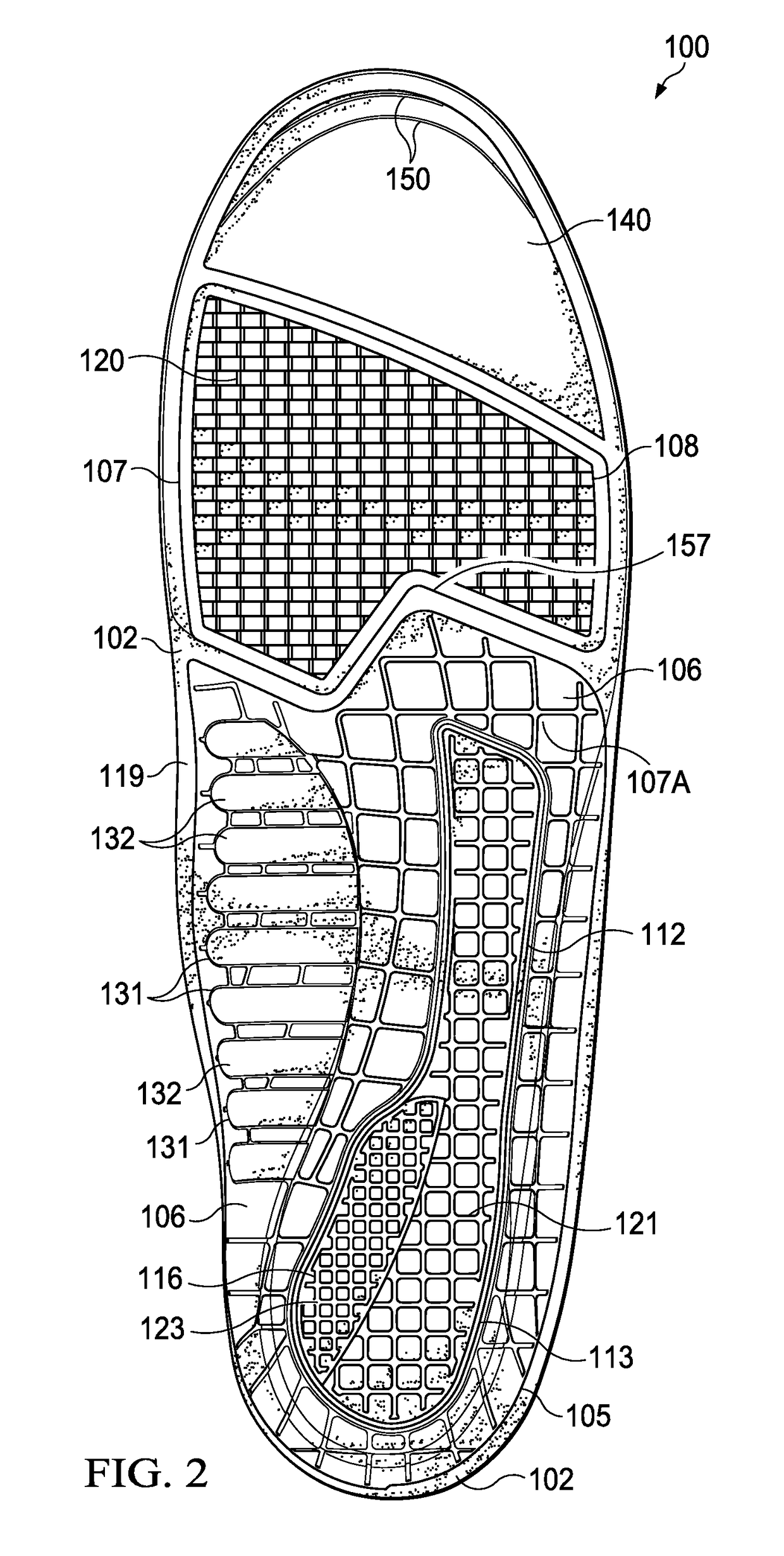Shoe insole
a technology for shoes and insoles, applied in the field of shoes insoles, can solve the problems of high cost of custom made insoles, inability to make such custom made insoles for the general public, and complex biological mechanism of the human foot, so as to improve cushioning, support and control, and improve the effect of motion control, support and cushioning
- Summary
- Abstract
- Description
- Claims
- Application Information
AI Technical Summary
Benefits of technology
Problems solved by technology
Method used
Image
Examples
Embodiment Construction
[0029]In accordance with principles of the present invention, a cushioning core or base is combined with a relatively stiff stability cradle and a number of elastomeric pads to form an insole that provides greater cushioning, stability, and control than was conventionally known in the state of the art. The pads, including an extended heel pad that extends from the lateral midfoot area into the heel area and a supplemental heel pad that overlays a portion of the extended heel pad, can have a different firmness than the base and / or the stability cradle. The extended heel pad and the supplemented heel pad assists with prevention of supination or the prevention of pronation.
[0030]The combination of the base, stability cradle and heel pads provide a “degree” of medial longitudinal arch support, which provides a couple of degrees of improved pronation “control.” A “degree” of medical longitudinal and support is just 1-2 of degrees based on research evidence. By pronation “control,” we mea...
PUM
| Property | Measurement | Unit |
|---|---|---|
| thickness | aaaaa | aaaaa |
| thick | aaaaa | aaaaa |
| thick | aaaaa | aaaaa |
Abstract
Description
Claims
Application Information
 Login to View More
Login to View More - R&D
- Intellectual Property
- Life Sciences
- Materials
- Tech Scout
- Unparalleled Data Quality
- Higher Quality Content
- 60% Fewer Hallucinations
Browse by: Latest US Patents, China's latest patents, Technical Efficacy Thesaurus, Application Domain, Technology Topic, Popular Technical Reports.
© 2025 PatSnap. All rights reserved.Legal|Privacy policy|Modern Slavery Act Transparency Statement|Sitemap|About US| Contact US: help@patsnap.com



